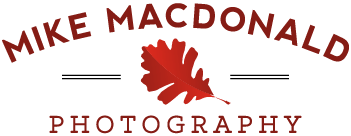
To express the essence of springtime at Pembroke Savanna, I placed the lens just inches from the ground and only five inches from the closest foreground subjects. Then, I waited for the low light of evening to visually separate the subject matter and help to convey the wonder and elation that I was feeling.
In 1993, I began photographing Chicago nature as a form of self-expression. Over the years, I’ve grown into a conservationist, using photography, writing, and stage performances to help Chicago nature celebrate its beauty and importance to humankind.
Within just fifty miles of downtown Chicago, there is more protected natural area than most national parks and more native plant species than any national park. Every day, April through September, you can witness a world-class wildflower blooming event happening right down the road from home, work, or school. Unfortunately, most Chicagoans are unaware. And because you can’t love and support something that doesn’t exist, I’ve made it my mission to play “nature matchmaker”—to introduce Chicagoans to the gorgeous nature next door and to spark thousands and thousands of love affairs.
In contrast to the mountains, Chicago’s panoramic splendor relies on in its ever-changing displays of wildflowers that decorate the prairies. Yet, unlike closeup images of flowers and butterflies that accentuate the individual, a landscape photograph has the power to convey the full experience of the place these individuals call “home”—within a community that Chicagoans call “home.”
Ansel Adams used the limited technology of his day to depict the towering topography by casting the mountain backdrop as the star of the show. However, this approach quickly breaks down when used to portray the depth and grandeur of the flat outstretched prairie and its flourish of flowers expanding to the horizon. Inspired by Chicago’s prairie panorama, I developed an immersive, hyperrealistic compositional approach that I call The Chicago Prairie Style. It accentuates the depth of any vista by emphasizing the foreground, while also communicating the essence and emotion of the experience.
Tolstoy defined art as the transfer of emotion from one person to another—a connection of heart to heart. Like a musician’s feelings of joy and despair etched into the mysterious grooves of a phonograph record, I record my passion into the pixels: my feelings on film, my emotion on emulsion, my senses on the sensor.
Unlike children and wide-eyed animals, the landscape has no eyes to its soul, no straight glimpse into its heart. Yet, in a quest to give nature a voice, its mysteries have inspired me to create immersive landscape images that conjure emotion. I have surrendered myself to the magic of nature and have fallen under its spell.
PHOTOGRAPHIC TECHNIQUE: THE CHICAGO PRAIRIE STYLE
I created The Chicago Prairie Style of Landscape Photography to convey the powerful, immersive experience of the panoramic, yet topographically flat, Chicago prairie. With one click of the shutter, multiple views of the scene are combined into a one hyperrealistic image to faithfully capture the moment.
In a perceptual process that I call Optical Eye/Mind’s Eye, we first use our (optical) eyes to view the scene to understand the big picture, panning the panorama from side-to-side, front-to-back. Then we hone in. We direct the focus of our attention on subjects at various distances. These subjects, no matter how small, are magnified to fill our mind’s eye, our world. Everything else disappears.
To recreate this perceptual process into one image, I use fuse the wide perspective of landscape photography with the deep and immersive feel of macro photography. This produces landscape images that express both a depth and an intimacy that give the viewer a hyperrealistic sense of being part of the scene.
I place a (low-magnification) super-wide angle lens just inches from the foreground subjects and use a form of hyperfocal focusing at very small apertures (and sometimes focus stacking). This extreme propinquity dramatically restores the magnification of subject matter closest to the camera with excellent sharpness into the distance. Any softness caused by diffraction is rendered insignificant using digital post-processing. To further increase the hyperrealistic feel of the photograph, I often take advantage of “glancing light”—the soft, low, side-lighting from an early-morning or late-afternoon sun—to visually separate the subjects and convey fine details.
The Chicago Prairie Style also includes techniques for the four E’s of Essence, Essential Elements, Emotion, and Experience.
MEDIA APPEARANCES:
TV:
Watch story about Mike & ChicagoNatureNOW! on WTTW Chicago Tonight.
Watch Mike’s interview about his book on WTTW Chicago Tonight.
Watch Mike talk about Chicago nature photography on ABC 7 Eyewitness News Sunday Morning.
Watch Mike give photography tips on Fox 32 Chicago’s Good Day Saturday.
Watch Mike share his love of nature on WGN-TV Midday News.
Watch Mike’ talk about Chicago nature on CBS 2 Chicago’s Sunday Morning News.
Radio:
Listen to Mike’s interview about winter magic in Chicago nature on WBEZ’s Morning Shift – Jan. 7, 2019.
Listen to Mike’s interview about his book on WBEZ’s WorldView – Feb. 8, 2016.
Listen to Mike’s interview about ChicagoNatureNOW! on WBEZ’s Worldview – Apr. 18, 2017.
Listen to Mike talking about Chicago nature on WBEZ’s Morning Shift – Oct. 17, 2016.
Listen to Mike talking about photography on WCGO-Radio – Dec. 2, 2018.
Print:
Daily Herald – Jan. 17, 2019
Make It Better magazine – Aug. 5, 2016
Chicago Sun-Times – Mar. 26, 2016
Chicago Tribune – Jan. 17, 2016
View some of Mike’s published work:
Outdoor Photographer – March 1997
Petersen’s Photographic – October 1999
UIC Alumni Magazine – July/August 2000
Chicago Wilderness – Fall 2005
Chicago Wilderness – Winter 2006
Garden’s Illustrated cover photo – January 2009
Outdoor Photographer – November 2011


